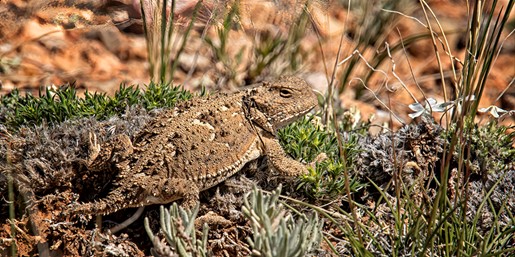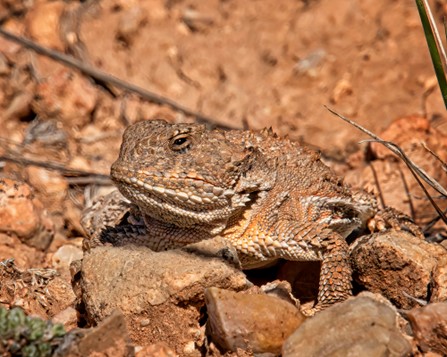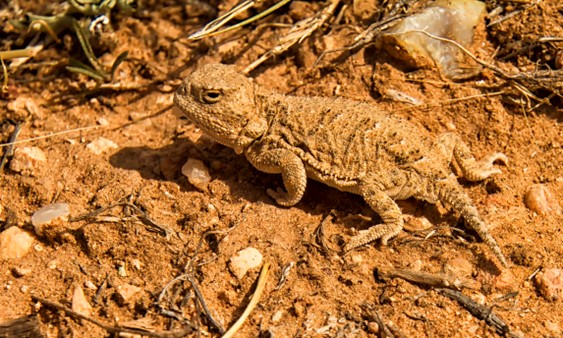



Greater short-horned lizard observations can be reported online:
If unable to report online, please email your local FWP office to submit your observation.
Bozeman: fwprg3@mt.gov
Great Falls: fwprg42@mt.gov
Billings: fwprg52@mt.gov
Glasgow: fwprg62@mt.gov
Miles City: fwprg72@mt.gov
When reporting an observation, please include:
Date
GPS coordinates, if available, or detailed location description
Photos, if available
Email for follow up if needed
Remember! While reporting, take only photos of the horned lizards. Do not handle, move or cause harm to the lizards. Horned lizards are intricately tied to their ecosystems and do not survive captivity well. Please leave them where you find them.
There is anecdotal evidence of significant declines for this species. This species faces threats from continued habitat loss through land use changes, collection as pets and the invasion of non-native plant species.
Greater short-horned lizards are challenging to find during structured FWP surveys. Observations from the public are valuable in determining distribution.
Identification:
Often called “horny toad” or “horned toad”
Round, flattened body shape
Row of spines along body
Heart-shaped head
Habitat:
Most common in central and eastern Montana
Sagebrush and grassland habitats
Frequently found in sunny spots on bare soil
Food Habits:
Predators that hunt by sight
Beetles and ants are most common food sources
Ecology:
Diurnal: most active during daylight hours
Females are viviparous, meaning they give birth to live young
Hibernate during late fall and winter and emerge from late March to early June
To learn more about Greater short-horned lizards and to view the current known distribution in Montana, visit Montana Natural Heritage Program Field Guide
